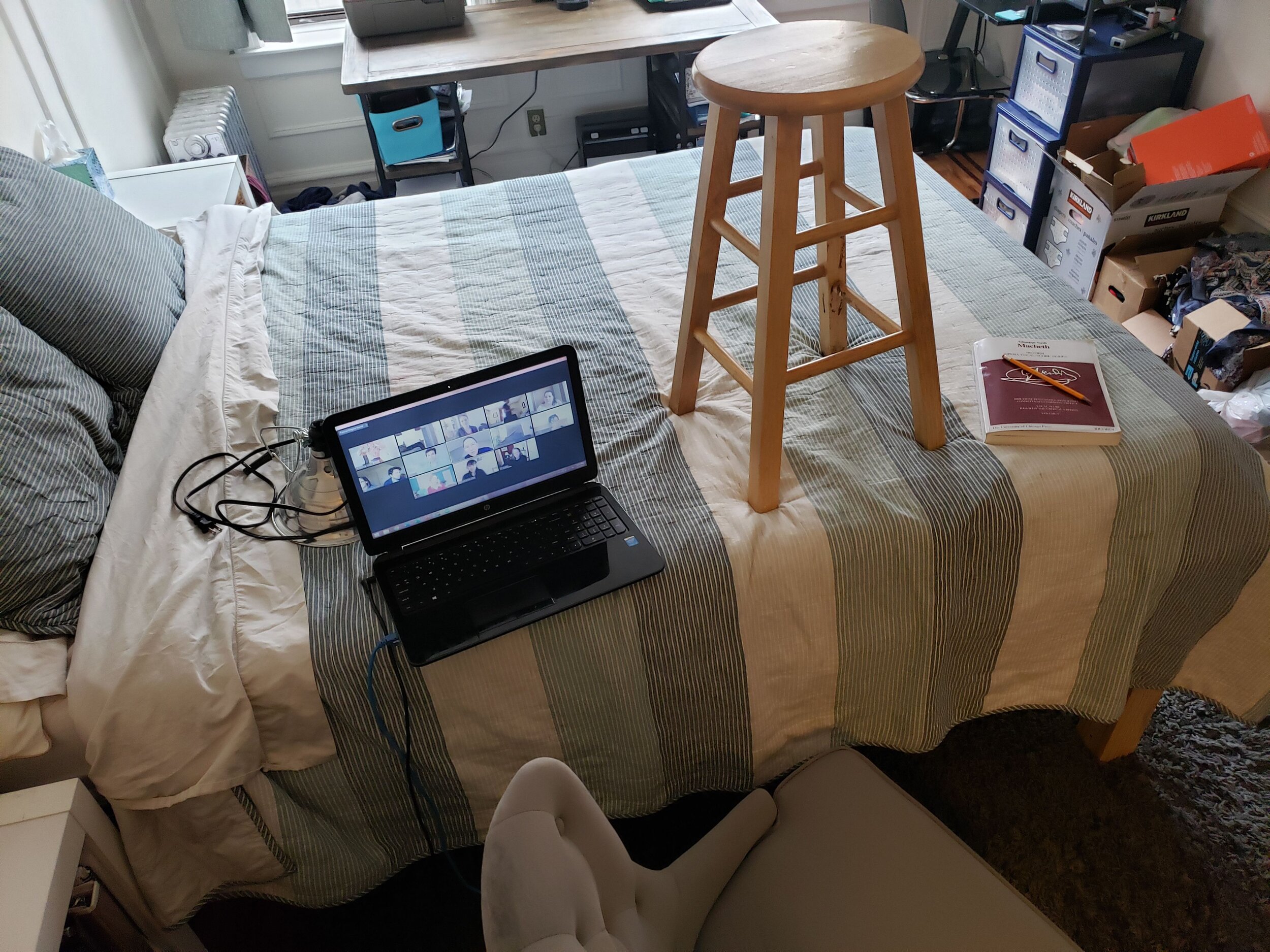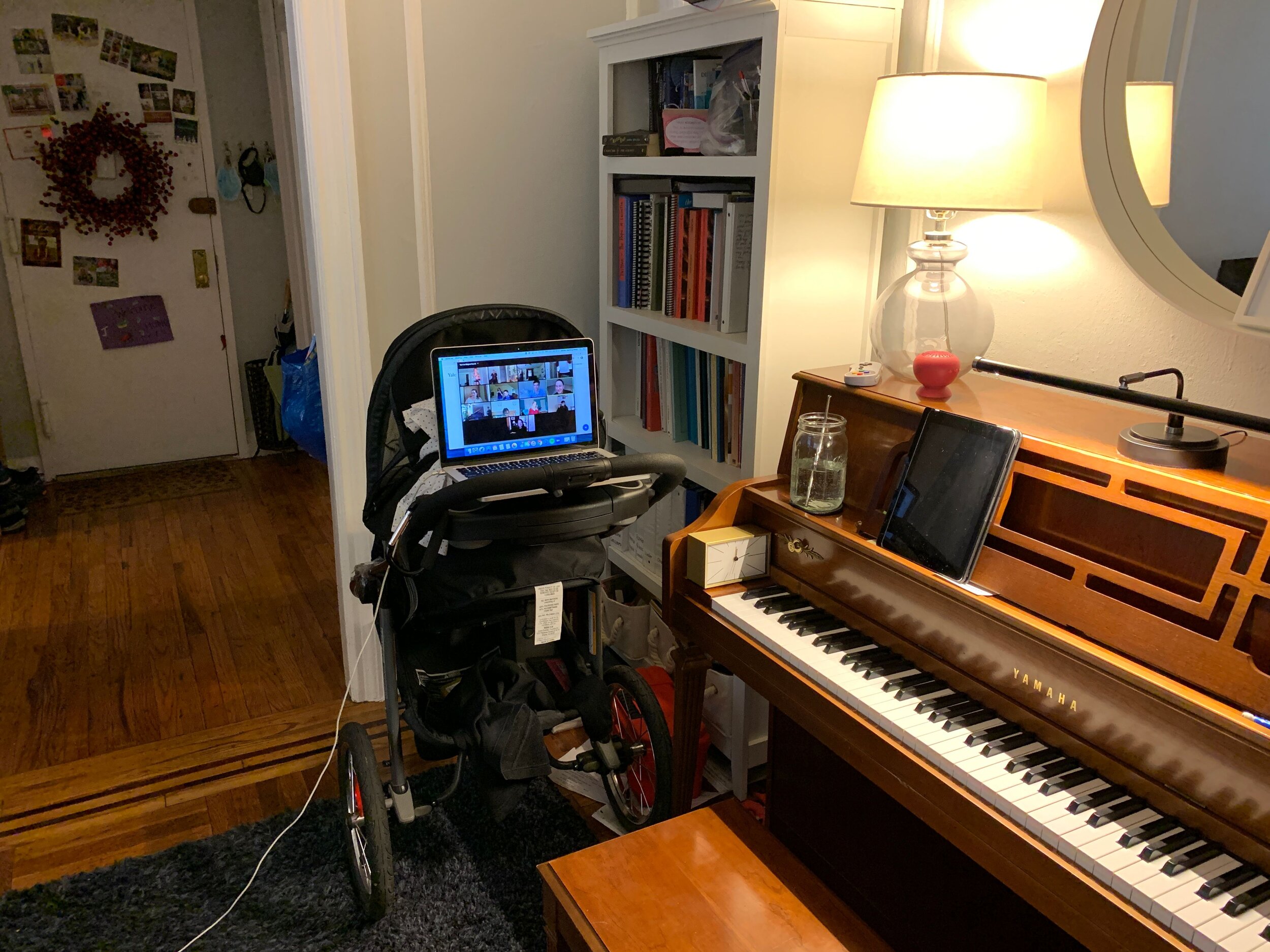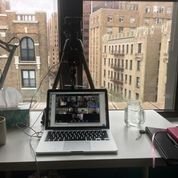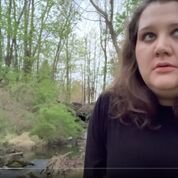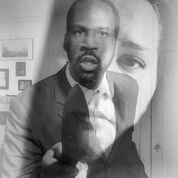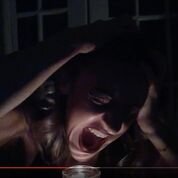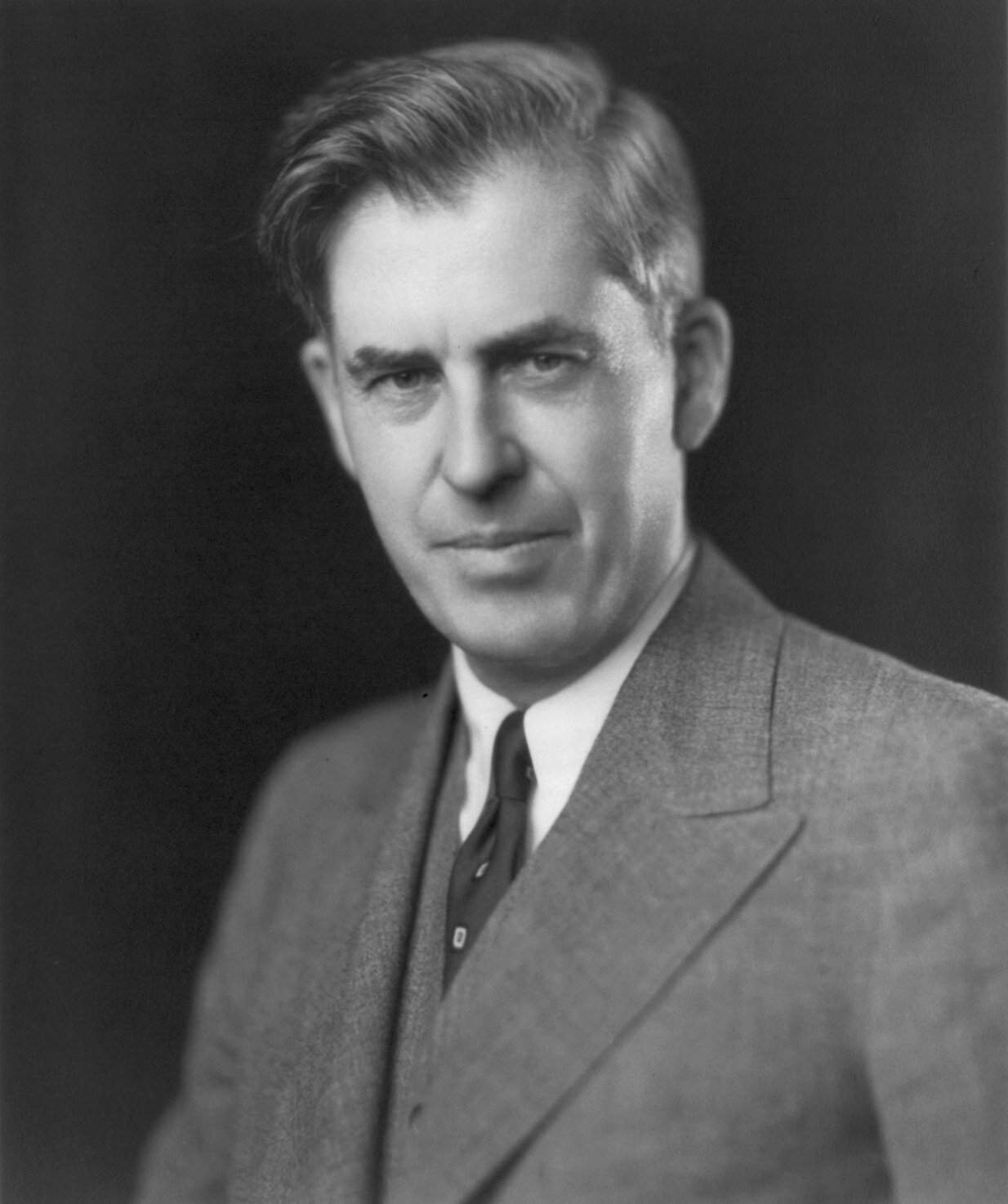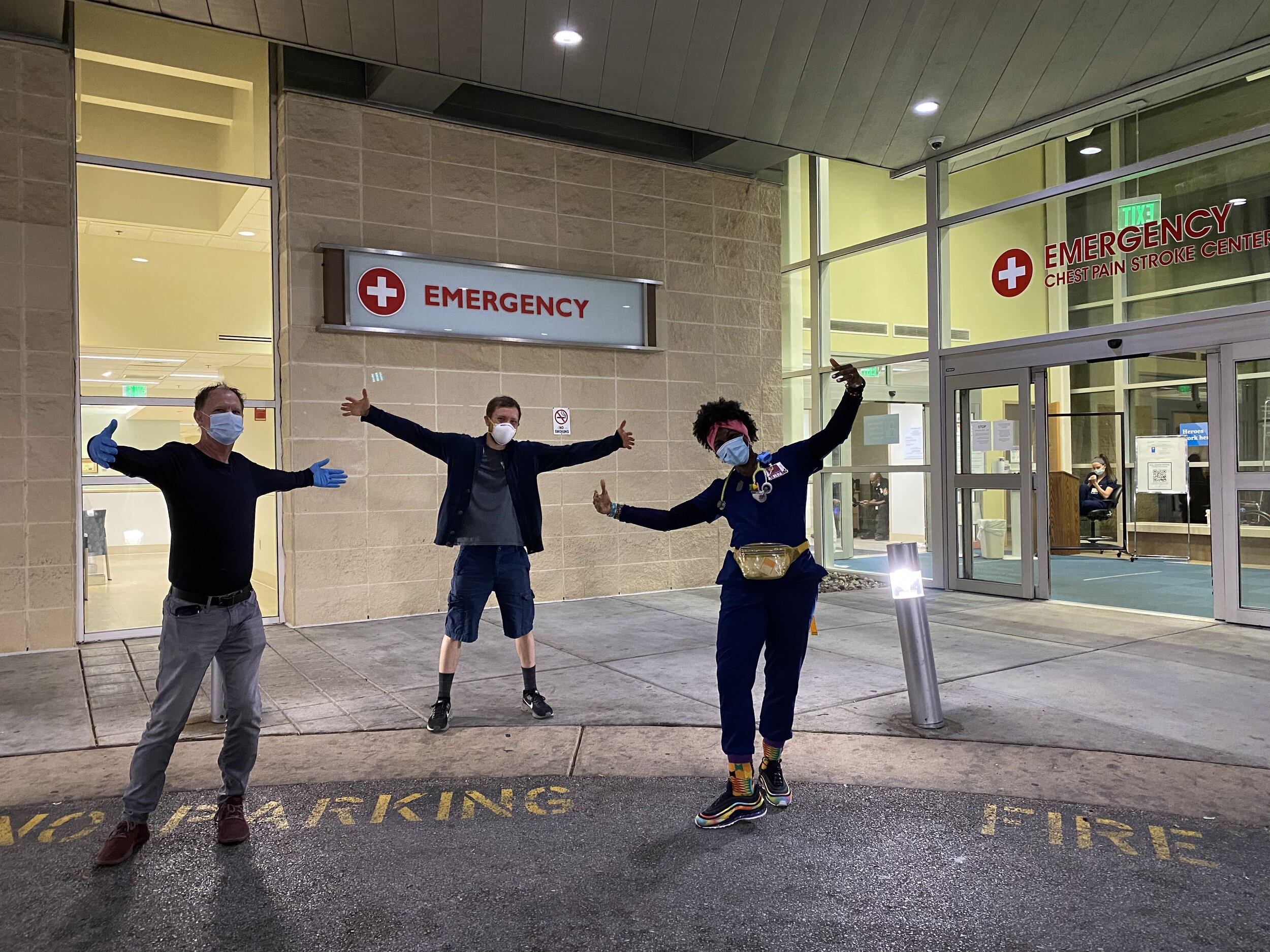Heartbeat Opera’s Lady M is planned as a modern, adapted, shorter version of Verdi’s Macbeth told from Lady Macbeth’s point of view and was to have premiered this Spring; it’s the sort of thing Heartbeat Opera does, changing operas and creating new ones to better communicate with today’s audiences. Then, the pandemic closed all theaters. The company’s leadership could simply have postponed or folded their new production. Instead, they marshaled their spirits and their creative energies to remain engaged with their artists and to offer something new to their audiences. Voila, an online Lady M Soirée, or a fantasia as Director and Adaptor Ethan Heard calls it. It is a virtual drawing room party devoted to introducing the concept behind Lady M and giving us a sampling, but also ncludes us as part of that process. It’s something new and fresh, and we need that!
A Zoom room snapshot of the creative staff and performers for Lady M; photo courtesy of Heartbeat Opera.
The Lady M Soirée was born out of need, theirs and ours. Let’s let Merle Haggard provide the context before I discuss details. (I have finally started watching the Ken Burn’s series “Country Music” that I recorded on PBS some time ago; this somehow started me listening to Merle Haggard). Mr. Haggard always seems to have the right song to articulate emotional longings; country music has been described as three chords and the truth. For the Lady M Soirée, I offer his song “I’ve Had a Beautiful Time” (with my annotations):
We met downtown in the barroom (substitute Zoom room)
Both of us needing a friend (true I think)
And you brought me home to your doorstep (all was recorded or live-cast in performers homes)
And it was there you invited me in (I got to see the Movement Director’s vacuum cleaner)
And more (no annotations needed) -
We talked about what we been needin'
Discussin' our ups and our downs
And I've had a beautiful time
Holding your heart next to mine
And finally (which will require a little discussion) -
And I can't say I found any answers
But you listened while I rattled on
The Soirée offered a mix of intros among the staff and attendees; a behind the scenes video discussion of artistic issues with the creation of Lady M and the technological issues in pulling together the virtual Soirée; a few aria performances (one live, one I’m not sure, and one recorded); finishing with the group splitting into chat rooms to mingle with the staff and artists for a Q&A.
A sampling of current offices/performance venues for Heartbeat Opera; photos courtesy of Heartbeat Opera.
Highlights for me: I think it was real; it seemed real. I was in a Zoom room with twenty to thirty other homo sapiens or that appeared to be homo sapiens, including artists, staff, and audience members. That was kinda cool. Some of the presentations were recorded, and the mix was not always entirely clear to me. I’m always harping on how much better live performances attended in person are; the Soirée inched somewhere in between recorded and in person (I might also note that my twenty-something son tells me that hearing performances in person isn’t nearly as preferred by him as me; worries for opera’s future?.
Soprano Felicia Moore as Lady M and mezzo-soprano Sishel Claverie as a Weird Sister; photos courtesy of Heartbeat Opera.
The whole affair maintained my interest, but it was the excellent singers that doled out the afternoon’s desserts. Soprano Felicia Moore as Lady Macbeth has a captivating voice, powerful and rich with color. Her early Lady M aria sung in her childhood bedroom, and the video of the sleepwalking scene (Maledetta) were excellent, giving her the chance to fully display the colors, texture, and emotionality of her voice. Wow. It was interesting in the Q&A that Ms. Moore said that perhaps the most difficult part of her bedroom performance was singing with accompaniment that was recorded. Mezzo-soprano Sishel Claverie appeared live where she lip-synced part of the Witches chorus, transformed in Lady M to the three Weird Sisters, all solo sopranos. The weird sisters look like they are going to bring the fun in the staged production. Ms. Claverie brings infectious energy and excitement to the role. The other singers appeared for a few seconds in the different video clips. In the short time allotted, there was a brief appearance of Beauty led by the singing.
Screenshots showing some visual effects in the Sleepwalking video; photos courtesy of Heartbeat Opera.
The music arranged by Music Director and Co-Translator Jacob Ashworth with new arrangements by Daniel Schlosberg was played by a six-piece ensemble and had to be sewn together from audio/video files. The music in Maledetta added to the eerie mood and shifts in the scene and had me wanting to hear more of the new arrangements.
Performances, live and recorded, were done in interesting ways; visuals were usually engaging if sometimes baffling. Movement Director Emma Jaster, who owns an excellent vacuum cleaner, along with Ethan Heard and Jacob Ashworth did a twenty-minute Zoom tour of each of the performer’s homes to help the singers deal with moving and performing in their individual circumstances. The visuals in Maledetta were eerie and appropriately disturbing for Lady M’s nightmare, though for me, had more of a collage than flowing effect.
My only disappointment with the virtual Soirée is that, at an hour, it was all to brief.
When I think about what distinguishes opera, it is Beauty. Opera has the ability, more so for me than other art forms, to achieve Beauty and when it does, a wormhole in the universe opens up connecting the audience to each other and to the universe itself with the feeling that we are all part of a larger truth. But opera companies are also in the entertainment business. I have the feeling from this brief introduction to Lady M that it will be entertaining when staged. I was certainly happy to drink from the Soirée’s cup. The question in my mind is will it attain transcendence through Beauty.
Most opera companies are striving to remain connected to their audiences via offering concerts and operas via streaming, but Heartbeat Opera stands out for injecting creativity into an online performance, using the medium to not just sustain their audience, but to draw them closer with fresh, personally engaging experiences. It turns out that Merle Haggard’s friend in the song was not his wife. Were we sort of cheating on live and in person opera, In the spirit of if you can’t be with the one you love, love the one you are with? One risk with cheating is that sometimes those relationships blossom; then what? We don’t have answers, but for the future, one can envision a complementarity for virtual soirées and staged performances. I think technology is moving into staged performances as well. Pittsburgh Opera is now providing interactive experiences using smart phones during their staged performances which I like, but as a separate experience from traditional viewing. Classical opera performances aren’t going away, but new, perhaps younger fans may well be gravitating towards technology-enhanced experiences.
Heartbeat Opera is planning to move ahead with staged performances of Lady M next Spring. After the introduction to her in the Soirée, I want to see Lady M, and I wonder how these virtual experiences might lead Heartbeat Opera to adjust what is finally presented.
The Fan Experience: There are 12 remaining online Soirée performances scheduled, May 28-June 6, sometimes two evening performances or a matinee and an evening performance; the run was extended due to its popularity. As an interactive opera experience, each Soirée will likely be slightly different. You need to have a computer and a good internet connection sufficient for streaming audio and video, and you must download the Zoom app if you haven’t already. Heartbeat Opera sends you all the instruction you need. If you are uncomfortable being part of a group, you can participate with your video feed and/or microphone turned off. It will cost you $30 for a one-time entrance to the Soirée, but the whole family can watch. Not bad for possibly a glimpse of opera’s future. There were a couple of technology clunkers, but no harm done. At the end, there was an appeal for much needed support for Heartbeat Opera’s Tomorrow Fund.


